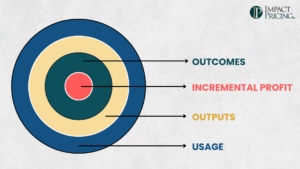Confused buyers don’t buy! This is one of my favorite sayings. Buyers are afraid to make a mistake, so when they’re uncertain, they are less likely to buy.
Do you have a complex price list? How many products or options does a single buyer need to consider to get to a decision? If you want more buyers to choose you, simplify your pricing.
Fifteen years ago, I bought a custom-fitted titanium bike from Seven. Two friends owned the bike shop and I was excited to buy one from them. When I went in for my fitting, of course, they watched me ride a stationary bike, made a bunch of adjustments, and had the perfect fit. So far, what I expected. Then they handed me a 7-page questionnaire to fill out on how I ride. Do I corner hard? Do I accelerate quickly like a sprinter? Not only was I confused, but I was terrified that I was going to specify a bike that I hated.
Yes, I still bought the bike. But I almost backed out. I didn’t want to make a mistake. If it weren’t for my friends selling it, I probably would have backed out. A confused buyer doesn’t buy. This example wasn’t pricing, but it was about a buyer afraid to make a mistake.
If you want to simplify your pricing while creating a product portfolio to generate growth, I recommend two steps.
First, clearly determine your market segments. A market segment is a group of buyers with a common problem. Once you’ve found your segmentation, your buyers should easily self-select. Think about Zoom. They have meetings. They offer webinars. They offer medical sessions. Each solves different problems. I use the webinar version because I sometimes put on webinars, but I don’t need to follow HIPPA regulations.
Second, within a market segment, create good, better, best versions of your product. These escalating versions could have more features, or more of one or more pricing metrics. The real key is it’s easy for a buyer to decide between 3 options.
Now, put yourself in the shoes of a buyer. They first quickly and easily identify which market segment they are in. Then, they see a good, better, best product offering. Voila!
Of course, this doesn’t work for every company or product line, but I’ve seen it work many times. The real problem most companies have is they don’t know how to define their market segments, and then they don’t know which features go in which version. Let’s save that conversation for another time.
What companies do you know of that use this product architecture? Let us all know.
Now, go make an impact!
Tags: impact, price, pricing, pricing strategies, pricing value














